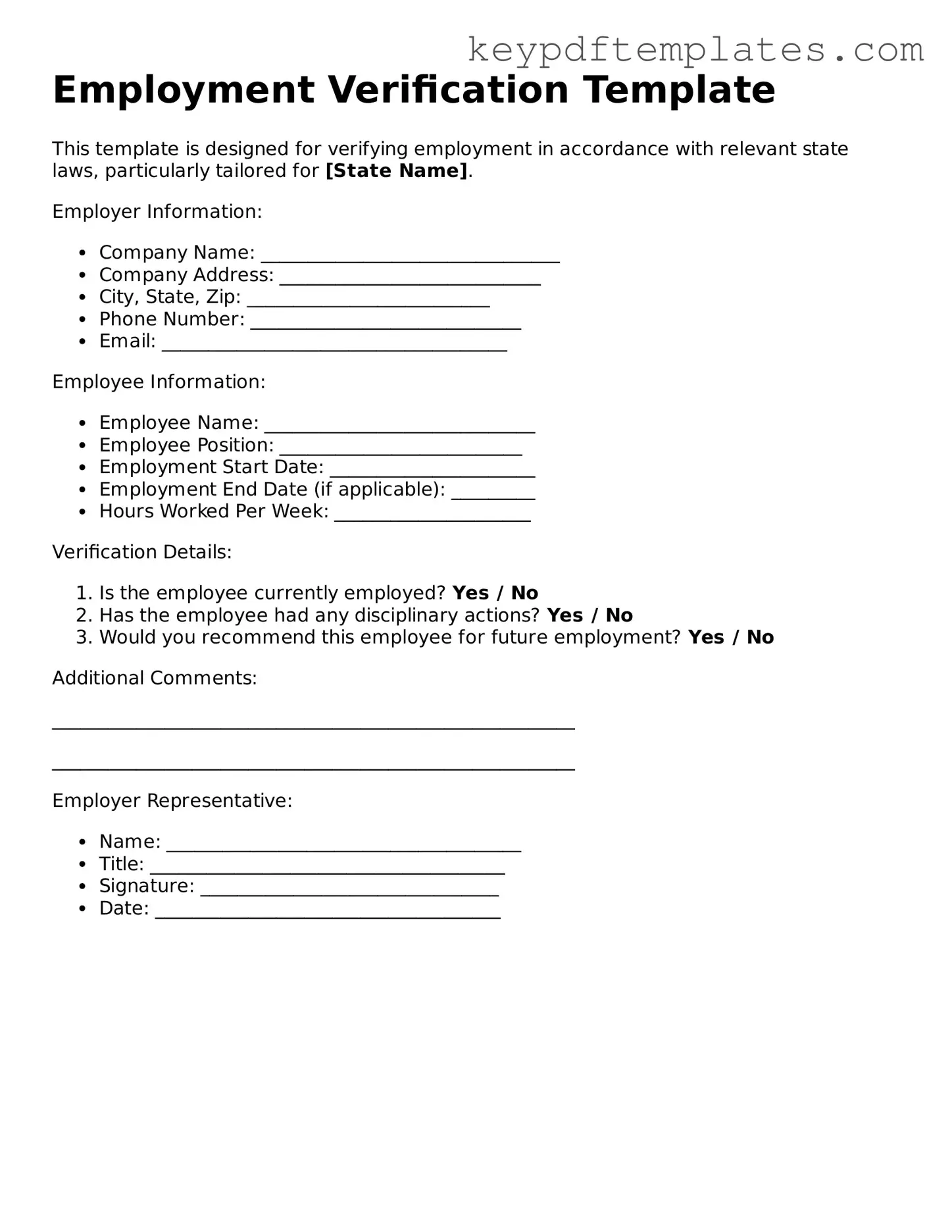Printable Employment Verification Template
The Employment Verification form is a crucial document that confirms an individual's employment status, job title, and duration of employment with a specific organization. This form is often requested by lenders, landlords, or other entities that need to verify a person's income and job stability. Understanding its purpose and how to properly complete it can streamline various processes in both personal and professional contexts.
Modify Document Online
